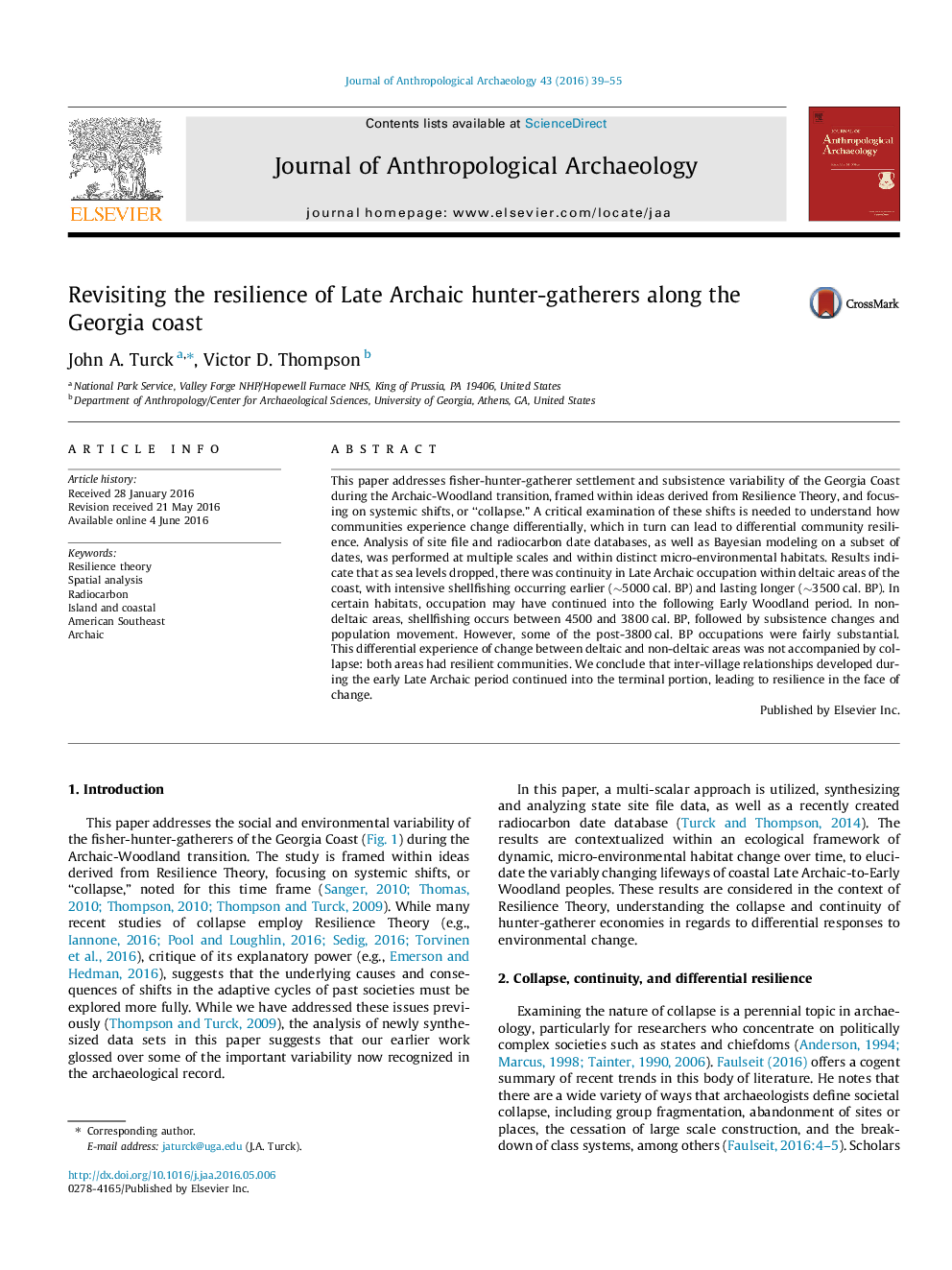| کد مقاله | کد نشریه | سال انتشار | مقاله انگلیسی | نسخه تمام متن |
|---|---|---|---|---|
| 1034847 | 1483847 | 2016 | 17 صفحه PDF | دانلود رایگان |
• Late Archaic shellfishing in coastal Georgia deltaic areas extends from 5000 to 3500 BP.
• In non-deltaic areas, Late Archaic shellfishing is shorter, from 4500 to 3800 BP.
• Societal transformations during this period were not accompanied by collapse.
• There was continuity throughout the Late Archaic period despite environmental change.
• The circular layout of shell ring villages facilitated integration and organization.
This paper addresses fisher-hunter-gatherer settlement and subsistence variability of the Georgia Coast during the Archaic-Woodland transition, framed within ideas derived from Resilience Theory, and focusing on systemic shifts, or “collapse.” A critical examination of these shifts is needed to understand how communities experience change differentially, which in turn can lead to differential community resilience. Analysis of site file and radiocarbon date databases, as well as Bayesian modeling on a subset of dates, was performed at multiple scales and within distinct micro-environmental habitats. Results indicate that as sea levels dropped, there was continuity in Late Archaic occupation within deltaic areas of the coast, with intensive shellfishing occurring earlier (∼5000 cal. BP) and lasting longer (∼3500 cal. BP). In certain habitats, occupation may have continued into the following Early Woodland period. In non-deltaic areas, shellfishing occurs between 4500 and 3800 cal. BP, followed by subsistence changes and population movement. However, some of the post-3800 cal. BP occupations were fairly substantial. This differential experience of change between deltaic and non-deltaic areas was not accompanied by collapse: both areas had resilient communities. We conclude that inter-village relationships developed during the early Late Archaic period continued into the terminal portion, leading to resilience in the face of change.
Journal: Journal of Anthropological Archaeology - Volume 43, September 2016, Pages 39–55
